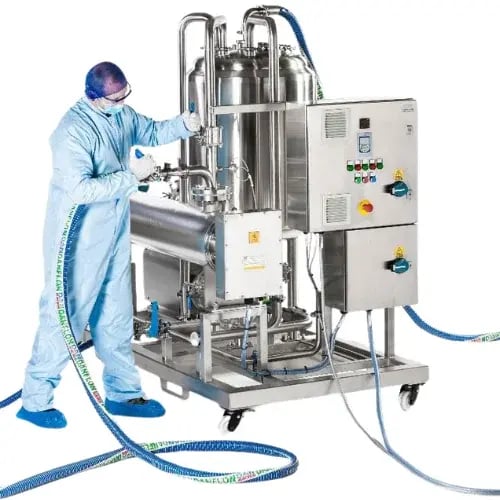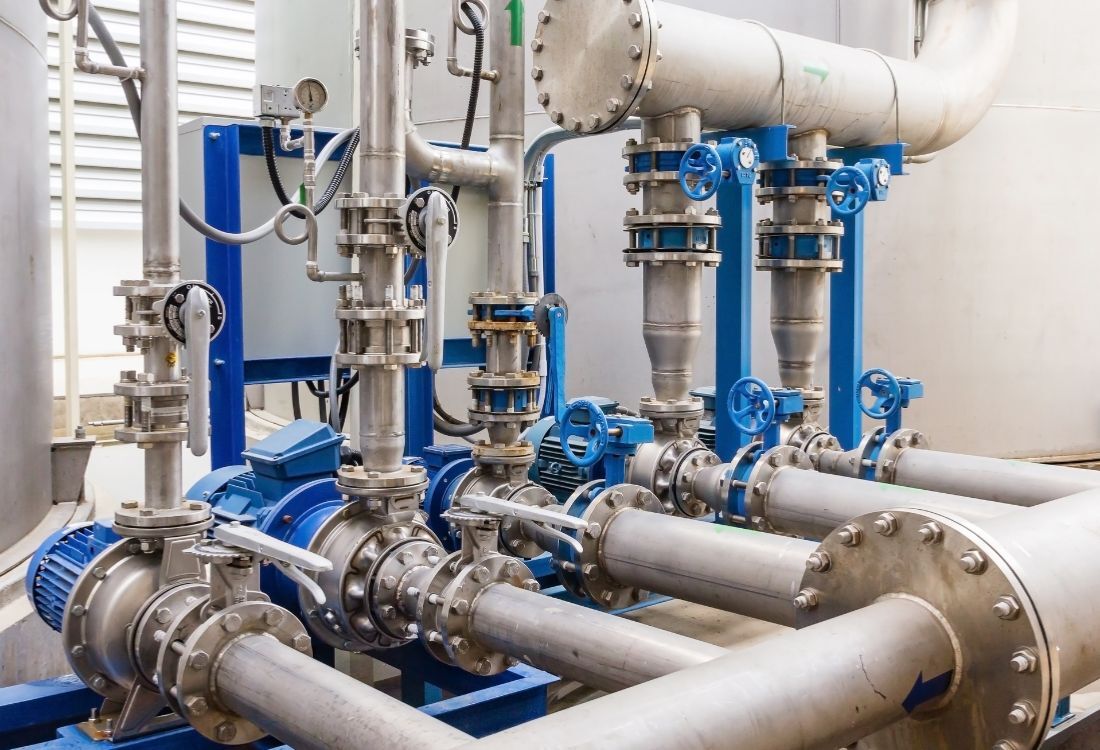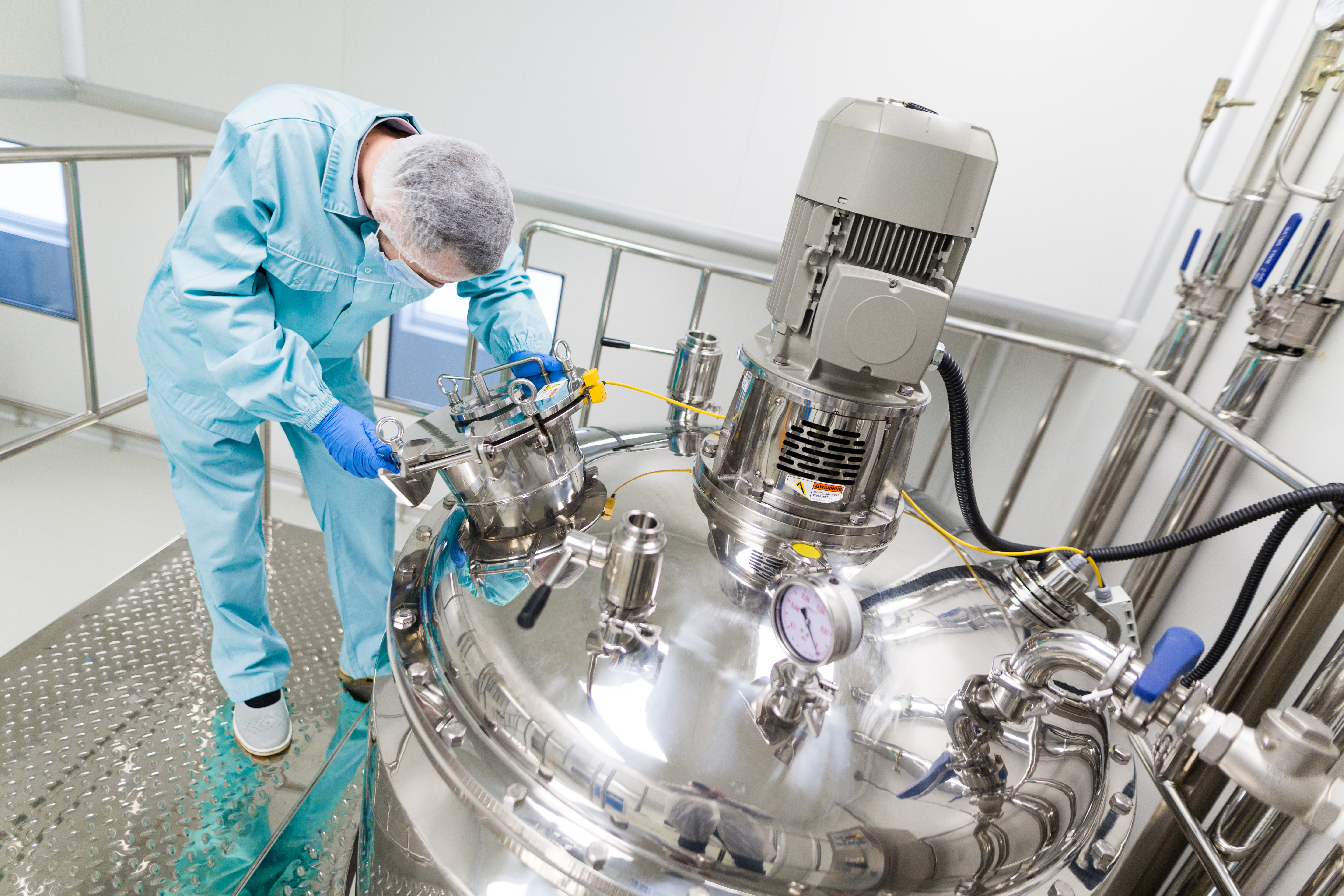Stainless Steel Passivation Process
Specialist passivation services designed for pharmaceutical and high-spec industries — ensuring your stainless steel equipment stays up to industry guidelines, protected, and audit-ready.
Why Passivation
Extends equipment lifespan
Prevents corrosion and contamination
Ensures MHRA/FDA/cGMP compliance
Protects product quality and patient safety
Specialised Passivation of Stainless Steel for High-Purity Environments
As our name suggests, INOX Passivation is a specialist in passivation processes. Our process, which uses proprietary chemical blends and equipment designed specifically for the pharmaceutical industry, is suitable for high-purity environments and is intended to reduce the safety and environmental risks associated with chemical cleaning. Our products are often non-hazardous and pH neutral, and can be sent directly to the client's waste system.
ASTM A380
ASTM sets international standards for materials, products, systems, and services. Our procedure aligns with the standards outlined in ASTM A380 to ensure optimal surface cleanliness for pickling. By following ASTM A380 guidelines, we deliver consistent and high-quality passivation outputs. ASTM A380 also supports our commitment to maintaining the highest levels of safety and performance in stainless steel treatment.
ASTM A967
The standard offers detailed guidelines for various passivation treatments, primarily using nitric acid or the more environmentally friendly citric acid, and includes rigorous testing methods to verify the effectiveness of the passivation process.
ASME BPE
ASTM A967 is the widely recognized and essential standard specification for chemically passivating stainless steel parts across a vast array of industries. Our passivation process will significantly increase the chrome-iron ratio of your stainless steel components and exceed the recommended requirements set by ASME BPE. The ASME BPE (Bio-Processing Equipment) standard is specifically designed for building equipment for the pharmaceutical industry. Unlike similar standards such as ASTM A967, ASME BPE offers extra crucial details. It includes a specific mention of the chrome-iron ratio and incorporates advanced inspection techniques like the Electrochemical Pen test and the Koslow test. We're one of the very few companies in the UK with the Koslow test equipment, ensuring top-tier quality and compliance for our clients.

Download the Process Decision Map

Not sure which treatment process your system really needs? Our Process Decision Map makes it simple.
Inside, you’ll discover:
Clarity on the right process for your system — remove the guesswork.
When to use passivation, derouging, oxygen cleaning, or flushing — tailored to different situations.
A quick-reference tool to guide confident, compliant decisions.
Download your free copy today and take the uncertainty out of critical process choices.
Why Passivation Matters
Repair/Cleaning of surfaces
Stainless steel passivation enhances corrosion resistance by removing free iron from the metal surface. A comprehensive passivation process will remove all extraneous material from the stainless steel component, often introduced during fabrication and installation. This process will ensure that the surface is in the optimal condition to form a consistent and all-encompassing passive layer that gives stainless steel its corrosion-resistant qualities.
Improved corrosion resistance
Passivation removes free iron and leaves a chromium-enriched surface. ASME BPE recommends that the chrome-to-iron ratio be above 1.3. A correctly passivated surface (using our proprietary citric acid blend) should achieve a Cr/Fe ratio in excess of 1.8. The more chromium on the surface available for oxidation, the more effective the passive layer and the more corrosion-resistant the component. Regular stainless steel passivation ensures the longevity and performance of stainless steel components in harsh environments.
Adherence with ASTM & ASME
In stainless steel passivation, ASTM guidelines ensure proper surface preparation and treatment. Compliance with ASTM standards helps achieve consistent and reliable passivation results. Many industries rely on ASTM specifications to maintain quality and safety. The two widely recognised specifications—ASTM A967 and ASME BPE—are the main foundation for many clients' internal specifications. These specifications are typically referred to during installation, commissioning, and ongoing validation of a stainless steel system. Our passivation process conforms with both specifications and exceeds their minimum requirements. ASTM A380 is also frequently used to guide cleaning and preparation before passivation. By incorporating ASTM A380, we ensure a more consistent and reliable stainless steel passivation process.
Delayed formation of rouge
Rouge is a naturally occurring phenomena on stainless steel in (usually hot) purified aqueous media. Whilst there are various mechanisms that can cause the onset of rouge, class 1 rouge is usually considered to originate from iron particles within the system. These particles could have detached from components within the system that are of a lower grade material or are damaged (pump cavitation for example), but they are more likely to have been introduced during fabrication and installation. Thorough passivation will remove this debris, thereby removing the material that would otherwise cause rouge early on during the equipment’s life-cycle.
Frequently Asked Questions
Chemical passivation is the process which the stainless steel surface is exposed to a chemical in order to remove any contamination and increase the chromium to iron ratio. This leaves the surface inert and in optimal condition for forming a dense chrome-oxide layer. Oxidising chemicals can augment the formation of this passive film, ensuring that the stainless surface is not left unprotected.
Un-passivated stainless steel (particularly after fabrication), is vulnerable to corrosion through surface contamination.
Pickling is generally specified when the component needs scale, weld-heat-tint and metallic contamination removing. It etches the surface (and therefore is not suitable for polished finishes).
Passivation will not damage the surface finish. It will only remove lightly adhered ferrous contaminants (free-iron) and helps to restore the chrome-oxide layer (passive layer) that makes stainless steel corrosion resistant.
Derouging is a term used to describe the removal of “rouge” – an unusual form of corrosion peculiar to high-purity water and steam systems. Rouge is most commonly found in a pharmaceutical manufacturing environment.
After derouging, passivation is required to optimise/form the passive layer.
We can passivate the stainless steel – in all of its forms (martensitic, ferritic, austenitic, duplex, etc.) Other chrome-nickel alloys (such as Hastelloy, etc.) can and should also be passivated to improve the corrosion resistance.
The recognised tests can be loosely grouped together into four categories. Accelerated corrosion testing, positive-indication testing, electrochemical testing and surface chemical analysis.
When using carefully selected chemicals, passivation will not damage the surface finish. Your passivation provider should also consider other materials within the system that could be adversely affected by acids, etc. These include gaskets, seals, glass, and many other items.
Passivation will not remove weld-heat-tint or rouge. Pickling is required to remove weld-heat-tint. A dedicated derouging process is required to ensure the removal of rouge.
The chrome-oxide layer that gives stainless steel its protective properties is easily damaged during the various fabrication and handling processes that it goes through before it goes into service. A thorough passivation process will remove contaminants and restore the passive layer, ensuring that (in a suitable environment), the component is not going to corrode, and you will get the best possible performance from your equipment.
This is very subjective and can be affected by many things. In most cases, a fairly typical purified water loop (<1,000 litres volume) can be fully degreased and passivated within 1 to 2 days, dependent upon the complexity.
ASTM stainless steel passivation typically uses nitric acid or citric acid solutions to remove free iron contaminants from stainless steel surfaces. Nitric acid is often combined with sodium bicarbonate for enhanced performance, while citric acid is a safer and more environmentally friendly alternative. Both methods offer corrosion resistance. Stainless steel passivation is essential after fabrication or welding to restore the protective oxide layer and offer durability.
Find Out More
To find out more about our passivation and derouging services and how they can support your business, please get in touch with one of our experts today by clicking here.
The Process of Stainless Steel Passivation
Passivation is a chemical treatment that removes free iron and other contaminants from the surface of stainless steel, while simultaneously promoting the formation of a thin, protective chromium oxide layer. This layer is what gives stainless steel its natural corrosion resistance. The process is typically performed after fabrication steps like welding, grinding, or machining, which can embed foreign iron particles or disrupt the passive layer.
Pre-Cleaning (Degreasing and Cleaning):
- Purpose: To remove all organic contaminants such as oils, grease, dirt, shop lubricants, and other foreign materials from the surface of the stainless steel. This step is critical because any remaining contaminants will prevent the passivating acid from effectively reaching the metal surface, leading to incomplete passivation.
- Method: Typically involves immersion in an alkaline cleaning solution.
Rinsing
- Purpose: To completely remove all cleaning solution residues from the surface before the passivation step.
- Method: Thorough rinsing with clean water, often deionised (DI) or reverse osmosis (RO) water in high-precision applications, to prevent any re-contamination.
Passivation
- To chemically dissolve free iron particles and other surface impurities, and to promote the formation of the chromium oxide passive layer.
- Method: The stainless steel parts are immersed in an acid solution. The most common acids used are:
- Nitric Acid: A strong oxidiser that effectively removes free iron and helps to form the passive layer. Various concentrations, temperatures, and immersion times are specified in industry standards (e.g., ASTM A967).
Citric Acid: A less hazardous and more environmentally friendly alternative to nitric acid. It selectively removes free iron while leaving the chromium intact, allowing the natural passive layer to form. Citric acid baths are gaining popularity due to their safety and disposal benefits.
- Nitric Acid: A strong oxidiser that effectively removes free iron and helps to form the passive layer. Various concentrations, temperatures, and immersion times are specified in industry standards (e.g., ASTM A967).
- Conditions: The specific concentration, temperature, and immersion time of the acid bath will vary depending on the type of stainless steel, the desired finish, and industry standards (e.g., ASTM A967, AMS 2700).
Post-Passivation Rinsing:
- Purpose: To thoroughly remove all traces of the passivating acid from the stainless steel surface.
- Method: Multiple rinses with clean water, often deionised or reverse osmosis water.
Drying:
- Purpose: To remove all moisture from the surface, preventing water spots and potential flash corrosion.
- Method: Air drying, hot air drying, or other suitable methods to ensure the parts are completely dry.
Testing/Validation:
- Purpose: To verify the effectiveness of the passivation process and confirm that a proper passive layer has formed.
- Method: Passivation effectiveness is verified through visual inspection, cleanliness checks, and electrochemical testing to confirm a uniform, corrosion-resistant surface that meets GMP and ASME BPE standards.
Speak To An Expert
Submit A Question Or Enquiry And Speak To One Of Our Experts To Find Out More!
Submit an enquiry with your question, to give us a brief or to request a call back from one of our experts.
When you get in touch with INOX:
We'll contact you back as soon as we are able to
We'll always aim to provide 'best advice' for your business
We offer a free initial consultation
Your information is treated in the strictest confidence
You can ask us for advice or help on any or all of the following:
- Passivation
- Derouging
- Oxygen Cleaning
- Biofilm Removal
- Riboflavin Testing
- Pre-Commissioning Flushing
- Carbon Steel Pickling
Simply confirm your details on the form provided and we'll be in touch ASAP. We look forward to hearing from you!
From Our Blog

Utilising An Audit Checklist For Pharmaceutical Industry Standards

The Importance Of Removing Biofilm From Pharmaceutical Water Systems


